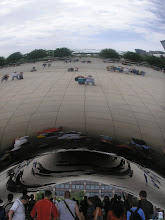Mozart was undeniably the most influential composer in Western music and also one of the most prolific. It is easy to think of some of his monumental works as Joshua Hey does in his journal response. Don Giovanni, Symphony No. 40, and Mozart’s Requiem Mass are all pieces in which we hear Mozart at his creative heights and his clever melodies are imprinted in our minds. However, these pieces make trouble for the vast works he composed which are not included in the canon, such as the Concerto for Flute and Harp, K. 299.
Not being able to recall this piece and reasoning it must be worth listening to because it is, after all, Mozart, I decided to read Joshua Hey’s response to the piece. Upon reading, I was shocked. Joshua describes the piece as predictable and unmemorable – what sacrilege! Calling Mozart unmemorable seemed like slapping God in the face. However, after listening, I changed my mind.
One of Joshua’s comments was that he could not recall a single theme from the piece after listening. I also found this to be true especially of the first movement. Even though the ensemble, minus harp and flute, hammer out the main arpeggiated theme for the first minute and a half before the concerto instruments enter and restate, I could not recall this open theme by the end. I also agree with Joshua on the initial novelty of hearing these two instruments playing a double concerto. However, the particularly thin sounds did become very tired to me, perhaps because of the similar roles they each played throughout. While the flute took long-winded solo interludes, the harp remained in an accompaniment role. I really wanted the harp to be able to share some of the spotlight. I also agree with Joshua on the lack of chordal work for the harp. I felt that in using an instrument such as harp, Mozart should have made use of the full range and technical possibilities of the harp, rather than having it double the flute lines. Working against the harp also was the fact that it was often in the same range as the upper strings and often employed a similar timbre, especially when the strings were pizzicato.
Joshua’s critique of the work’s harmonic structure was also accurate. Most progressions were from the tonic to the dominant and back again, making for very simple, predictable harmonic accompaniments. While this is fitting for a Classical piece where accompaniment is simplified and simple, catchy melody is the focal point, I did not feel the piece was balanced in that way. The melodies, for the most part, were simply not interesting or memorable enough to make up for the predictable harmonic movement.
I do, however, feel differently about the second movement. While I could not remember any themes from the first or third movements once the piece was over, I could remember the theme from the second movement. While the first and third movements had a more frantic, forced energy about them, I found the second movement to be much more organic and natural in its movement and space. The melody seemed to be derived more from emotion than from determining notes that would work. The slower andantino tempo allows more breath between the concerto instruments and the accompaniment. For these reasons, I found the second movement to stand alone as the memorable movement of the piece, and essentially the only place I differ in opinion from Joshua. I would, as a result, like to know more on Joshua’s indifference to the movement.
I very much enjoyed the closing of Joshua’s response in which he describes our how our “unfettered” view of the piece can cause our difference of opinion to how it may have once been received, and that we can “look for those few common threads that bind together all great art”. While Mozart’s Concerto for Harp and Flute fits the Classical mold, Joshua is correct in his assessment that it simply does not show us “something powerful about our very nature or existence” and therefore cannot be admitted into the canon which contains Mozart’s true masterpieces. (Joshua Hey, Cons 352WI Blog, entry posted January 25, 2009)
Subscribe to:
Post Comments (Atom)


No comments:
Post a Comment